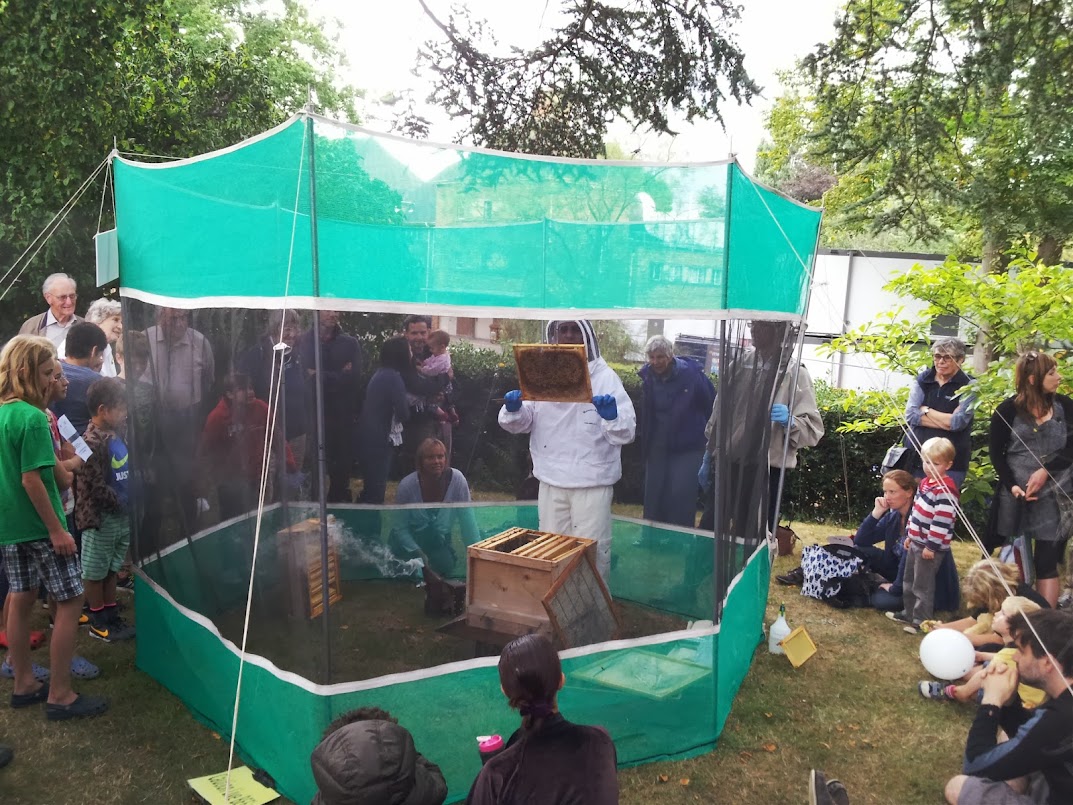It was also time to remove the 'apiguard' which should have done it's job by now. We cleaned the varroa monitoring board and will leave that for a few days to measure the rate of mite drop - my suspicion is that it's still going to be higher than the 10 per day which is supposedly acceptable going into October, but we will see.
My helper for today was the boy - operating the smoker - a little too generously in some cases - too much smoke seems to make the bees cross rather than calming them down - it's a fine balance and clearly not easy for a 10 year old boy, the fascination of the smoker cum flame thrower can outweigh the 'minimum' of smoke necessary to have the desired effect....
Anyway - going into the hive, we removed the 'empty' super which was really just on there to let the vapour from the apiguard circulate, removed the apiguard tray and then had a look at some of the frames without distubing them too much. - It still wasn't hot outside so didn't want to cool them more than necessary.
The top super is almost totally filled with capped honey now - barring the sides nearest the outside of the hive. It's a fair weight to lift that - the sort of weight you wouldn't want to be much heavier - that's a good thing as it's got to keep the bees going until next spring. I believe they need at least 20-25Kg of stores to see them through and the weight of the super is around that at a guess.
Going into the brood box - The outside couple of frames at each side are honey, then going into the frames, there is more pollen - I think they are putting pollen into some of the area previously used for brood which would make sense if the queen is starting to slow down laying. We didn't really look for brood, nor see the queen as the bees were getting a little touchy at this point. - There's little I can do this late in the year even if there were a problem with the queen, so better just let them get on and do their thing. - I'm pretty sure all is OK anyhow.
On this frame, you can see that it's got some capped honey round the edge and toward the left of the picutre, and then most of the rest of the frame is pollen. - You can see the different colours toward the right of the shot pretty well.
The bees hadn't really touched the last lot of syrup I'd put on there, but since it is still reasonably warm and dry, I left that on when we closed up the hive. Checking back tonight, they've nearly emptied the feeder so maybe they'd just not found it before. - The crown board is now directly on top of the super, and the feeder directly on top of that, so it's much easier for them to find the feeder than it was when I had the empty super on top of the 'stores' super. - Either way, I think this will be the last of the liquid feed I will give them this year. I might get some fondant feed to tide them over the winter if necessary - though how I know if they need it or not I'm not sure at this point.
Still a large number of bees around, though drones are increasingly rare when we stand watching them coming and going. - The poor drones get kicked out as they are unneeded mouths to feed over the winter. I guess we'd expect the number of workers in the hive to reduce too from this point, and there just to remain a core of workers to overwinter with the queen.
Jobs remaining to do...
1. - Think about insulation - maybe have a look at options to insulate the roof cavity, and potentially the outside of the hive.
2. - Check varroa drop & assess possible options for treatment if it's still high.
3. - Get some fondant food in.
I will keep looking in on them from time to time if the weather is warm enough, but that's going to be increasingly rare from this point on.









